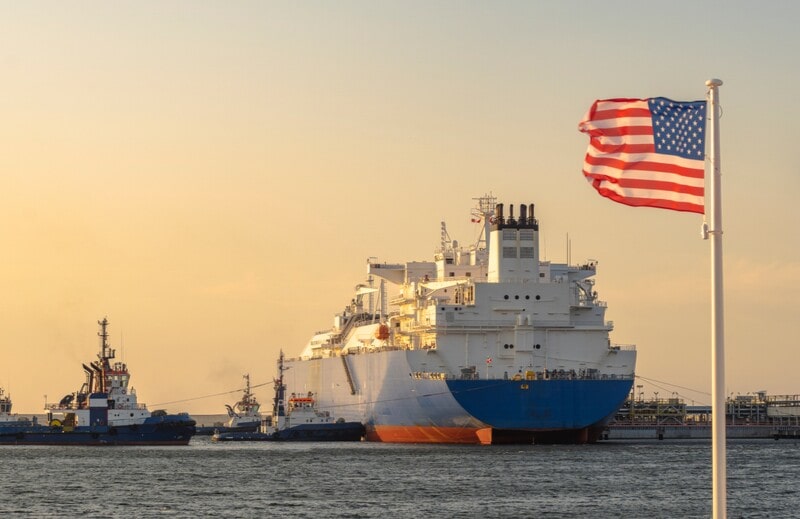The United States’ LNG exports soar by 4% in the first half of 2023, overtaking global competitors.
The United States took the lead as the world’s top exporter of liquefied natural gas (LNG) in the first half of 2023, outpacing all other contenders, including Qatar, according to a recent report from the US Energy Information Administration.
While the United States has long vied with Qatar for the title of the world’s leading LNG exporter, Australia unexpectedly seized the second position this year, leaving Qatar in its wake, as per data by the French non-profit organisation CEDIGAZ.
Australia’s LNG exports in the first half of 2023 averaged 10.6 billion cubic feet per day (Bcf/d), while Qatar followed closely at 10.4 Bcf/d.
The EIA, a governmental authority with knowledge of the energy markets, pointed to the revival of operations at the Freeport LNG facility as a pivotal factor behind the US’ drastic growth, with a slew of other LNG projects on the horizon for the US Gulf Coast.
Drawing upon data provided by CEDIGAZ, dedicated to natural gas intelligence, the report reveals that US exports surged by 4% in the initial half of this year when compared to the same period in 2022.
The US now ships an average of 11.6 Bcf/d of LNG, outshining every other nation on the globe. It also said US LNG exports reached a monthly pinnacle of 12.4 Bcf/d in April, with Freeport LNG substantially boosting its LNG production.
Freeport LNG, the second-largest LNG export terminal in the United States, had a temporary shutdown following an explosion in June 2022. It only resumed shipping in February 2023 after extensive repairs and system upgrades. As per Freeport LNG’s management, the company is now planning to expand operations, potentially adding a fourth train.
The expansion is projected to increase their LNG export capacity by more than 5 million metric tonnes per annum (mtpa), raising the total export capacity to over 20 mtpa per year.
Meanwhile, European countries have been racing to enhance their import capacities, driven by the need to compensate for the diminished supply of Russian gas.
Consistent with trends observed in 2022, the EIA attributes Washington’s feat to the robust surge in demand from Europe, which stands as the primary market for American gas exports.
European Union countries and the United Kingdom remained the main destinations for US LNG exports in the first half of 2023, accounting for a substantial 67% (7.7 Bcf/d) of total US exports.
Five nations in particular – the Netherlands, the UK, France, Spain, and Germany – collectively imported more than half (6.0 Bcf/d) of the total US LNG exports.
The LNG race
In May last year, Qatar reclaimed its title as the world’s top LNG exporter, Bloomberg reported, after lowered winter demands shoved the US down to second place.
Qatar has taken centre stage in energy talks as Europe scrambled to secure its gas supply in an effort to abandon its reliance on Moscow.
Following last year’s Russian invasion of Ukraine, Qatar was approached by Austria, Italy, Germany, the UK, and France in an effort to reduce their reliance on Moscow’s gas.
In November 2022, Germany signed a 15-year LNG agreement with Qatar, with flows expected to kick start in 2026.
Qatar also holds long-term contracts with Asian buyers, which mainly include China, India, Japan and South Korea.
While the US has appeared to take the lead, the race between Washington and Doha remains competitive and both are expected to compete to dominate the market after their major expansion projects are fully completed.
Qatar’s multi-billion plan North Field expansion project, which is the largest of its kind, seeks to boost the country’s annual LNG production capacity from 77 million metric tonnes to 126 million tonnes by the year 2027.
Qatar’s North Field is also projected to power the Middle East’s LNG liquefaction capacity by adding 140 million tonnes per annum until 2050, as per reports.
From 2021 to 2050, an additional 560 million tonnes of liquefaction capacity will be available globally, according to the Gas Exporting Countries Forum (GECF) report, released on released on 29 January.







